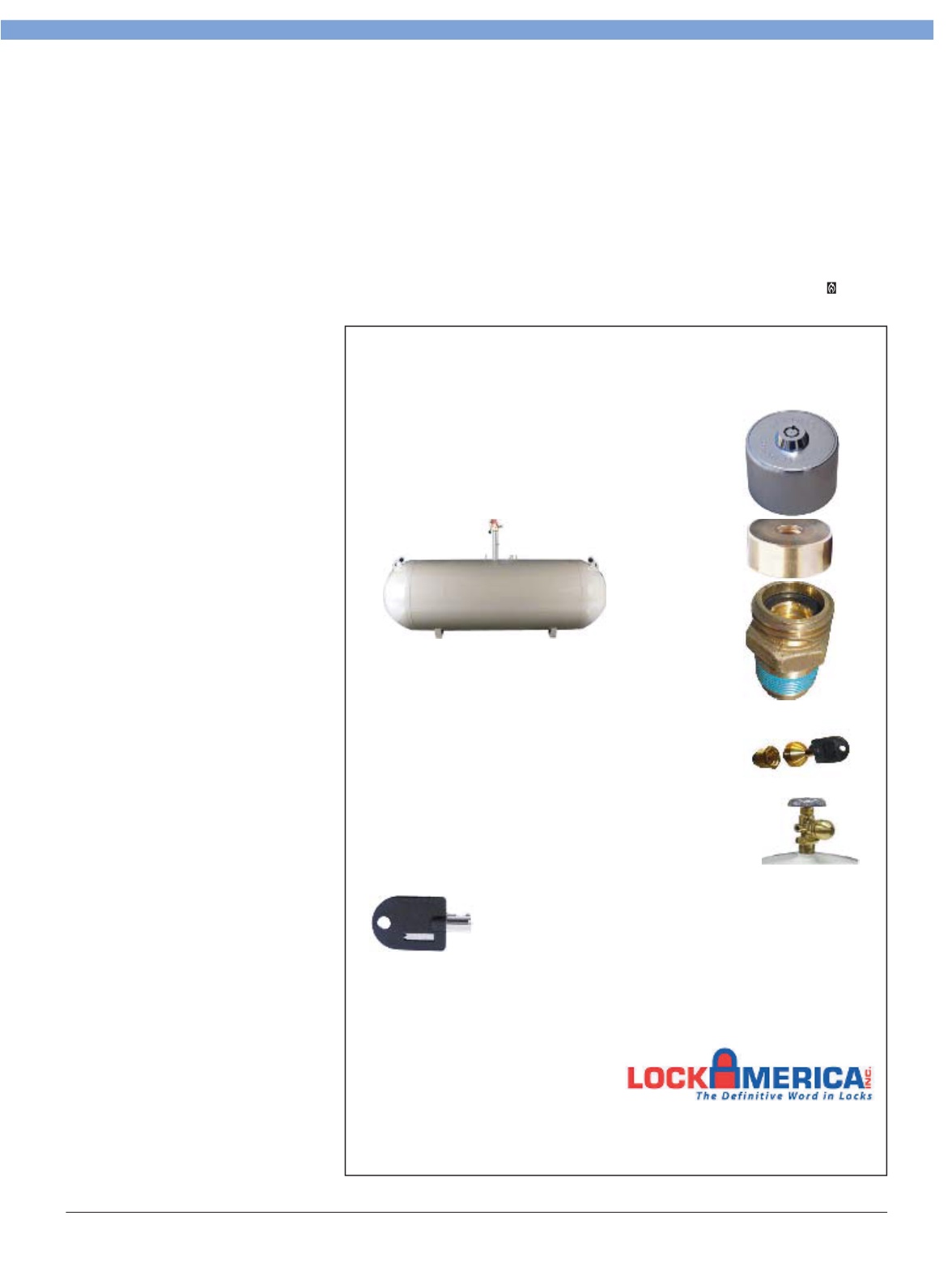
November 2013 • 21
6(&85( <285 3523$1( 7$1.6 :LWK
/2&. $0(5,&$¶6
),// 9$/9( /2&.
&RQWURO GHOLTXHQFLHV
5HGXFH \RXU OLDELOLW\
6(&85( <285 287/(7 9$/9(6
:LWK /RFN $PHULFD¶V 32/RFN
6HFXUH UHWDLO WDQNV DJDLQVW WKHIW
6HFXUH WKH RXWOHW RI VWRUDJH WDQNV
2QH NH\FRGH IRU DOO \RXU ORFNV
5XVW UHVLVWDQW VROLG EUDVV ILWWLQJV
8QLTXH NH\FRGH IRU \RXU FRPSDQ\
2YHU
NH\ FRPELQDWLRQV
SLQ DQWL SLFN NH\ZD\
)[
ZZZ ODLJURXS FRP
6WHOODU &W &RURQD &$
VDOHV#ODLJURXS FRP
have not resulted in fewer deliveries or
fewer service calls; rather, they have led to
significantly fewer oil spills.
Another level of inspection that a
number of companies have been offering is
an ultrasonic test of aboveground residen-
tial tanks. This test measures the thickness
of the tank and enables companies to
replace tanks before they start to leak. Some
companies offer this service on their own.
Others utilize the technology and software
of TankSure, which works with hundreds of
oil companies and has over 500,000 tanks
in their database.
WHAT’S HAPPENING WITH CODES?
Typically, most local authorities having
jurisdiction follow NFPA 31 in regard to
residential Oilheat systems. There were sev-
eral changes in the 2011 version of NFPA
31 that affect oil supply systems:
• The requirement that fill and vent pipes
be the same size was dropped, but vent
pipes still can be no less than 1 ¼”.
• The location of the ‘readily accessible
fusible link safety shutoff valve,’
commonly referred to as a ‘firomatic
valve’ was clarified. The valve(s) must
be located within 6” of the filter on the
tank side of the filter and within 12” of
the inlet connection to the burner.
The NFPA 31 Committee was sched-
uled to meet this October 29th to consider
additional upgrades to the standard. Due to
the severity of last year’s Superstorm Sandy,
some local authorities are considering
stricter guidelines for securing tanks against
floatation, and the committee will discuss
several options that have been put forth by
manufacturers and trade associations.
There are also several proposals that task
groups will be discussing:
• To bring the appendix into the body of
the standard, thereby making it manda-
tory instead of merely recommended.
• Requiring a test to verify that there is
sufficient combustion air available for
proper operation of the burner(s).
If sufficient air is not available, the
task group will also develop a list of
suggested solutions.
CONCLUSION
The tank “situation” is much better than
it was in 2004-05, when NORA first intro-
duced its tank program. Safer tanks have
been brought to market; many companies
are following tank inspection protocols;
and fewer people are looking at oil tanks as
the “Achilles heel” of the industry.
The last few sentences of the introduc-
tion of the 2004 version of NORA tank
manual reads:
“If we follow manufacturers’
installation and maintenance instructions,
NFPA regulations and the recommenda-
tions and instructions contained in this
publication, we’ll help to ensure a bright and
profitable future for our companies and our
industry. If we bury our heads in the sand
and ignore the ‘tank issue,’ the regulators
and insurance companies will decide our
future for us. The choice is ours, let’s decide
wisely.”
Thankfully, it seems that the majority of
our industry has decided wisely. More and
more companies have decided to address
the tank issue head-on by being proactive,
recommending tank upgrades before there
is an issue and addressing minor problems
before they lead to oil spills and/or insur-
ance claims.
Let’s keep up the good work.


